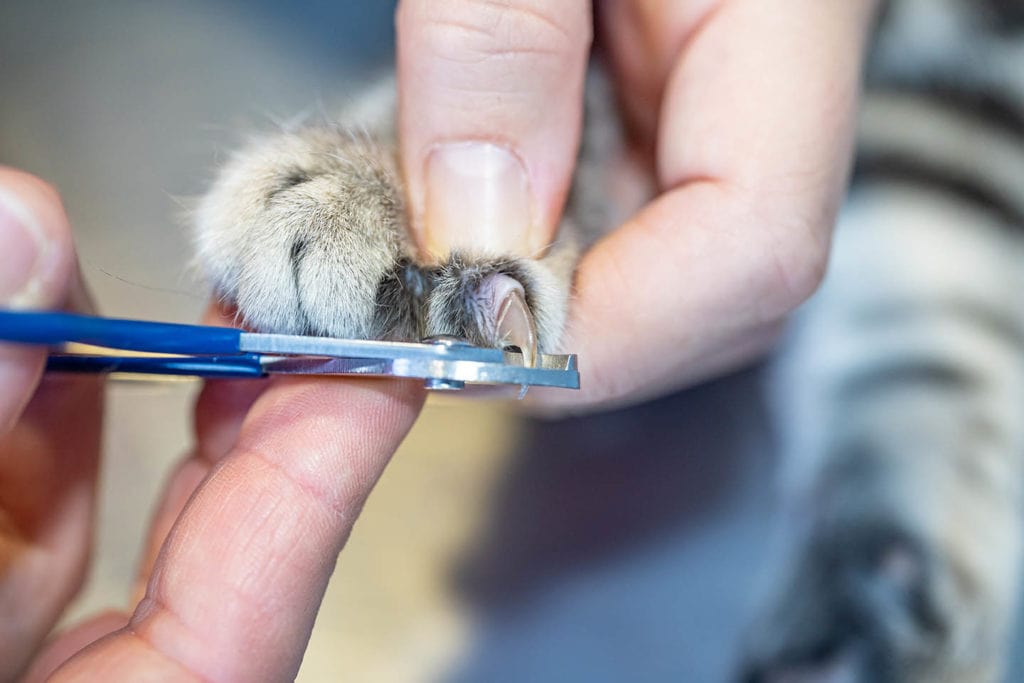
Click to Skip Ahead
Clipping your kitty’s nails is an effective way to minimize furniture damage and the risk that you’ll be scratched too hard when you’re playing together. There are specialty clippers that are designed to make the job easy and efficient. Some are marketed toward cat owners, while others are marketed toward dog owners. If you happen to have dog nail clippers on hand or can only find clippers for dogs at your local shop, you might be wondering whether you can use them on your feline.
The short answer is, yes, you can use dog nail clippers on cats! As long as you’re careful while you work, they can be used interchangeably between felines and canines. Here is everything that you should know about the topic.
The 4 Types of Nail Clippers to Choose From
Any of the four common types of nail clippers can be used to keep your cat’s nails trimmed. The type that you choose should be based on your level of comfort with using each device and your cat’s preferences. We recommend the guillotine clippers, as they are easy to use and work great on cat nails, which tend to be softer and less challenging to cut than dog nails. However, any of the following options can work for you and your kitty.
1. Guillotine Clippers
These clippers work like a guillotine does, hence their name. There is a small opening where your pet’s nail is inserted. When you close the clippers, the blade closes in on the opening and cuts through the nail. These clippers work best for small nails, so they might be a better option for cats than for dogs even though they are marketed to dog owners.
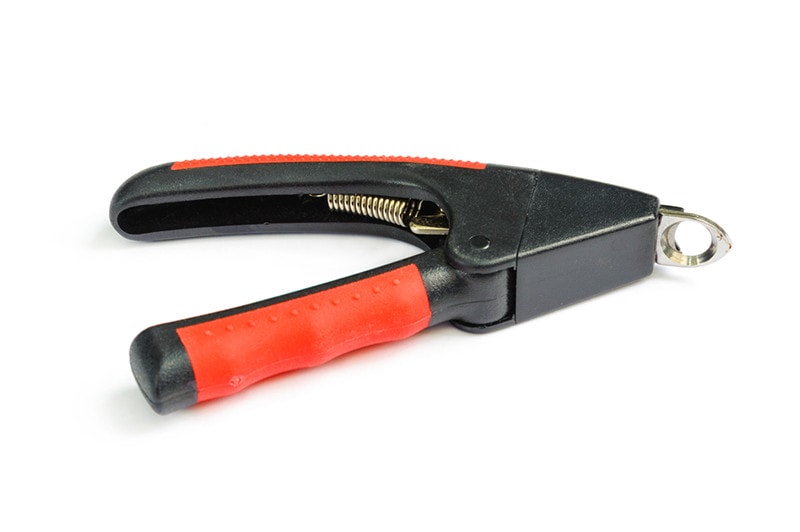
2. Scissor Clippers
These clippers look like pliers and function much the same. They are open at the end and close when the handles are squeezed. This is how scissors work too, which is how these clippers ultimately got their name — and it sounds much better than plier clippers when it comes to pet care!
These clippers are ideal for large dog breeds, as the spring near the blades provides added strength. They can be too forceful for cat nails unless you are extremely careful and focus on using light pressure when closing the handles.
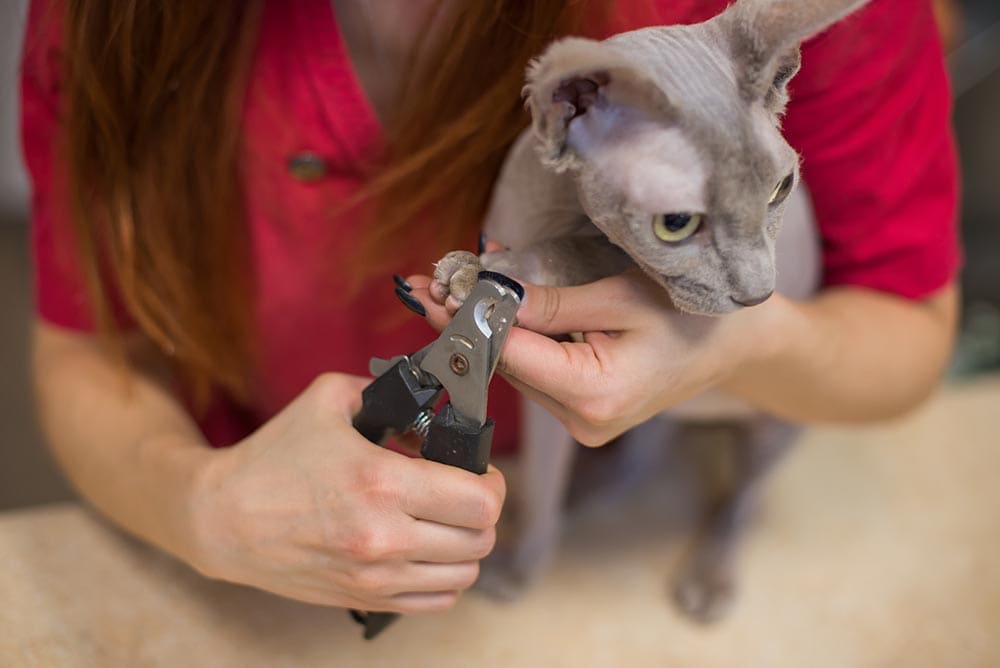
3. Human Clipper
Many cat owners never think of using their own clippers to trim their feline’s nails. The truth is that they can be used just like any other kind. They aren’t ideal for dogs (unless they’re small dogs), but they can work well for cats. Most are also designed with a guard built-in to make sure you don’t cut too much nail length off at one time, which can help ensure that you don’t end up cutting off so much nail length that bleeding and pain occur. We recommend not using your personal clippers for your cat, even if you wash them; they should have their own pair.
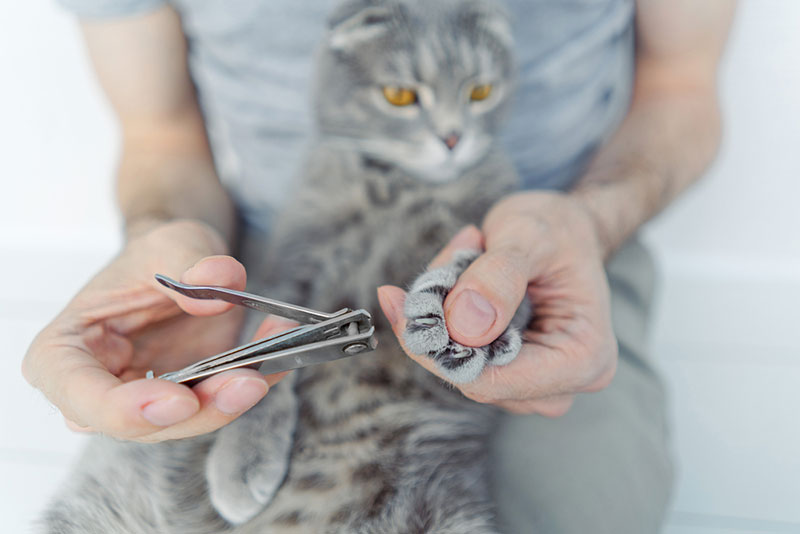
4. Grinders
This type of nail trimmer works like sandpaper and files down pet nails as opposed to cutting them. Nail grinders work quickly, so you must be diligent. The more you get used to the machine, the easier it is to determine when you should stop grinding. Until then, though, you should work in short spurts. It’s easy to grind too quickly, which can lead to bleeding nails and pain for your cat. Still, being slow and proactive can make this tool a useful one.
How to Trim Your Cat’s Nails – Step-by-Step Guide
There are a few things that you can do to make your kitty more comfortable during the nail-trimming process and to ensure that it doesn’t result in a cat that doesn’t trust you.
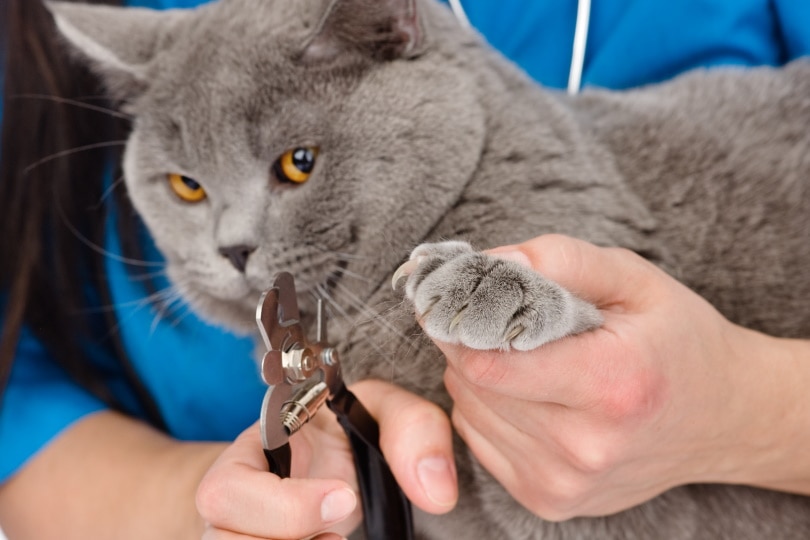
How to Know When to Trim Your Cat’s Nails
The truth is that you don’t have to trim your cat’s nails at all if they are not creating a problem for your household. However, if your cat’s long nails are ruining your furniture and/or accidentally scratching playful children, you may need to make nail trimming a priority. In general, you should trim your cat’s nails anytime they become long, sharp, and curved in shape.
Long, sharp nails can dig into a human’s skin and create issues like a rash and intense itching while the damaged skin area heals. Any time that your cat’s nails get too long or destructive would be a good time to trim them. The longer they get, the more damage they can do. Another sign that your cat’s nails should be trimmed is if their nails get caught in blankets and other items when they’re simply trying to move around.
The bottom line is that if there are any signs of distress, pain, or even inconvenience, it is a good idea to consider trimming your kitty’s nails. Everyone in your household, including your feline, will be happier and more comfortable with the decision.
Keeping your cat's nails trimmed is important, but it's no one's favorite task. You can make it easier with great clippers designed specifically for cats. We like Hepper's Cat Nail Clipper Set, a convenient combination of medium and small clippers that comes in a handy pouch. These sharp stainless steel clippers allow for precision trimming, with the added protection of built-in safety guards. Plus, there's a hidden nail file!
At Pet Keen, we've admired Hepper for many years, and decided to take a controlling ownership interest so that we could benefit from the outstanding designs of this cool cat company!
What to Do If You Cut Too Much of Your Cat’s Nail
There is something called a “quick” in each of your cat’s nails that you don’t want to cut when you are trimming their nails. If you do cut the quick, you will likely notice bleeding and discomfort from your kitty. The quick contains sensitive nerves and blood vessels that will cause pain and bleeding when damaged, and doing so could be enough to make your cat never trust you to trim their nails again.
While cutting into the quick can set back your nail-trimming efforts, there are at least a few things that you can do to reduce pain and bleeding while it heals. The best way is to apply styptic powder to the affected area. This will stop bleeding and help keep your cat from becoming too stressed out.
If no styptic powder is available, apply a clean, damp cloth to the affected area until the bleeding stops, and your cat feels less stressed out. During future trimmings, be careful not to let your trimming tool dig as deep, to avoid repeating the negative experience. The more often you can prove to your cat that they can experience a pain-free nail trimming session, the more likely they will trust you during the process.
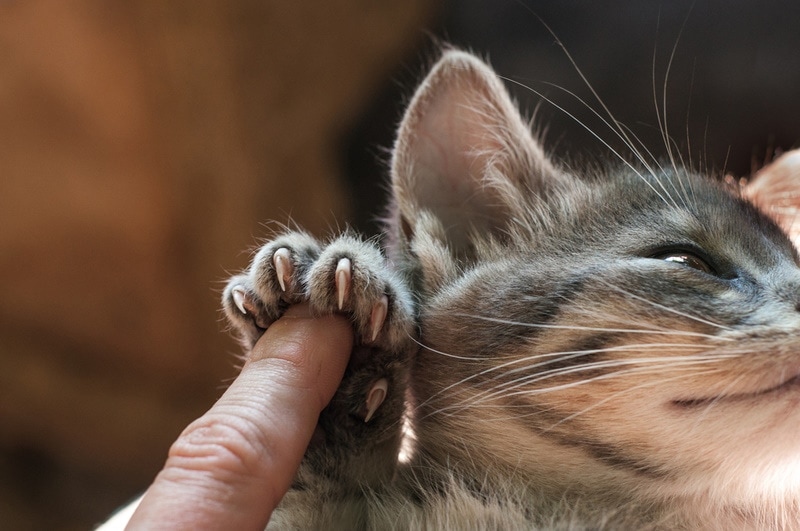
Final Thoughts
Trimming your cat’s nails might not be necessary if you don’t notice any negative aspects of their nails being long. However, if you chose to trim your cat’s nails, choose a tool that you and your cat are most comfortable with, even if it’s dog nail clippers, and be patient while you work toward pain and stress-free nail-trimming sessions.
See also:
- How to Treat Your Dog’s Broken Nail: Vet-Explained Step-By-Step Guide
- What Happens If You Don’t Trim Your Cat’s Nails? Risks & Grooming Tips
Featured Image Credit: GaiBru-Photo, Shutterstock







